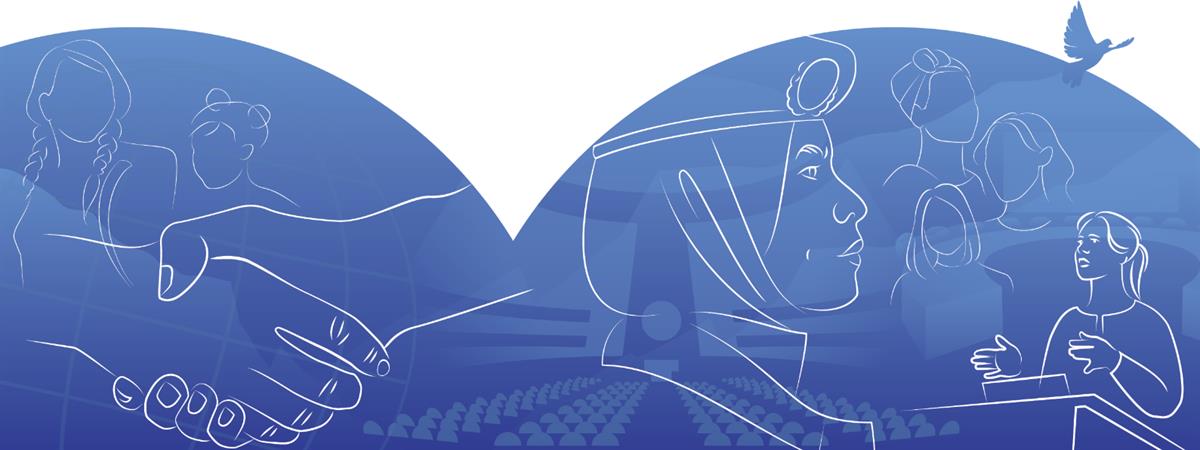Introduction

The women, peace and security agenda1 is a key element of Norway’sefforts to promote peace and security. This is Norway’s fifth National Action Plan on Women, Peace and Security, and builds on experience from previous action plans. Earlier thematic priorities in areas where Norway is in a particularly good position to promote the women, peace and security agenda internationally are retained in this plan, but it also reflects the growing importance of national implementation of the women, peace and security agenda in the field of civil protection and security.
Since the previous action plan was published in 2019, the world has been changing in many ways. The consequences of the COVID-19 pandemic, the impacts of global climate change, NATO’s withdrawal from Afghanistan and Russia’s war of aggression against Ukraine have all had implications for Norway’s international peace and security efforts. Women, peace and security was one of Norway’s four thematic priorities2 during its two-year term on the UN Security Council, and experience gained during this period has also influenced Norway’s work on this agenda in multilateral forums.
The trends of the past few years have shown the continued clear need to intensify work on the women, peace and security agenda, whether in the context of prevention, during ongoing conflicts, or when new crises arise. We have witnessed backsliding on and resistance to women’s and girls’ rights at both global and regional level. The importance of integrating the gender perspective into national defence and security work has also become clearer. The war in Ukraine has demonstrated how a conflict can mobilise and affect an entire population. It has shown how the impacts on people may vary depending on their gender and sexual identity, and also that war is still an arena dominated by masculine influence. Norway’s international efforts to promote the women, peace and security agenda will be improved by fuller implementation at national level. Moreover, Norway’s resilience to crises and conflicts depends on women’s full, equal and meaningful participation and on protection of women’s rights.3
This action plan makes it clear that Norway’s work on the women, peace and security agenda is to be intensified at both national and international level, and links Norway’s national and international efforts more closely together than previously. At national level, the gender perspective is to be integrated into the security sector, asylum policy and climate policy. The new action plan also takes a more ambitious approach to forging closer links between women, peace and security efforts, climate action and international work on climate, peace and security. Internationally, Norway will continue its work on women, peace and security in multilateral forums, and the number of priority countries will be increased across regions. Norway will make use of the comparative advantages it has built up through systematic work in the field of women, peace and security since the first action plan was published in 2006. We will exchange experience of national action plans with other countries in both bilateral and multilateral forums. We will also actively support other countries’ in developing and implementing national action plans.
The main objective of the work described in this action plan is to promote sustainable peace and security at national, regional and global level.
The most effective way of creating lasting peace is to ensure that peace settlements are inclusive and take into account the rights, priorities and needs of the entire population. It is important to recognise that women are not a homogeneous group with a uniform set of perspectives and priorities, but include people of differing sexual orientation, ethnicity, functional ability and religion. People who do not fit norms for gender and sexuality (LGBT+)4 are often differently and disproportionately affected by the consequences of conflict, and are frequently excluded from peace and security work. This is why an intersectional gender perspective must be integrated into all Norwegian work related to peace and security, in other words a gender perspective that takes the possibility of multiple discrimination into account.5 This approach also underlies all the thematic priorities included in this action plan, and is an integral part of the plan even where only women are explicitly mentioned.
This action plan focuses on three thematic priorities: peace processes and implementation of peace agreements; security policy and operations; and humanitarian efforts, protection of civilians and protection of human rights. The plan applies to the period up to 2030, thus making it possible to coordinate work on the action plan with efforts to achieve the UN Sustainable Development Goals,6 particularly SDG 5 on gender equality and SDG 16 on peace, justice and strong institutions, and with the 30th anniversary of UN Security Council Resolution 1325.7
The action plan was prepared by the Ministry of Foreign Affairs, the Ministry of Defence, the Ministry of Justice and Public Security, the Ministry of Culture and Equality, the Ministry of Labour and Social Inclusion and the Ministry of Climate and Environment. In addition, Norwegian and international civil society organisations and Norwegian research institutes and other experts have provided input and advice during its preparation.
Norway will
- integrate the women, peace and security agenda and a gender perspective into Norwegian peace and security efforts nationally and internationally, and into relevant national policy planning:
- support action to strengthen women’s participation and influence in all areas discussed in the action plan;
- play a leading role in developing, integrating and implementing the women, peace and security agenda internationally;
- promote mutual learning by intensifying the exchange of experience and competence-building activities with other countries that have reached different stages in the development and implementation of national action plans.